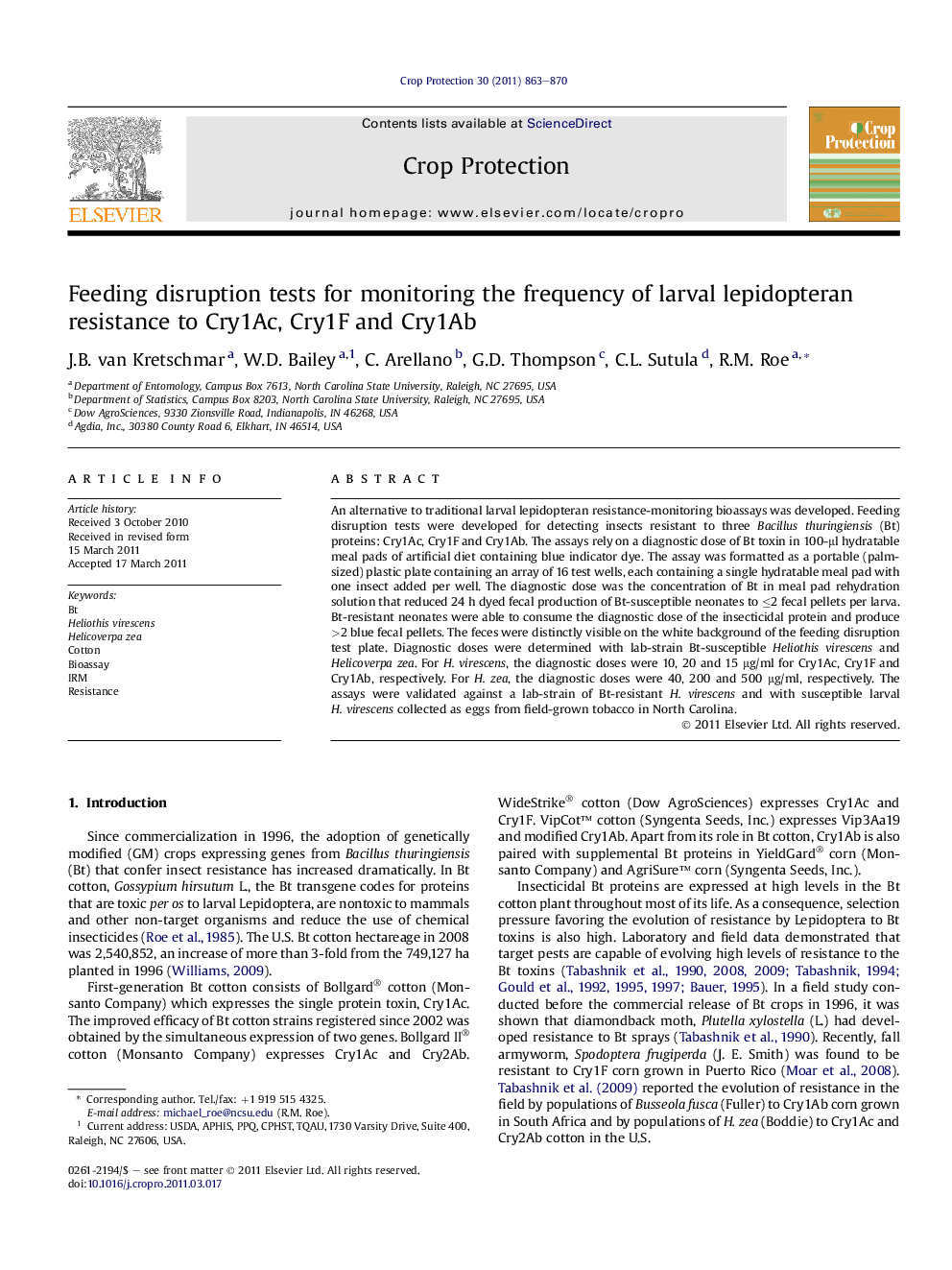| کد مقاله | کد نشریه | سال انتشار | مقاله انگلیسی | نسخه تمام متن |
|---|---|---|---|---|
| 4506872 | 1321333 | 2011 | 8 صفحه PDF | دانلود رایگان |

An alternative to traditional larval lepidopteran resistance-monitoring bioassays was developed. Feeding disruption tests were developed for detecting insects resistant to three Bacillus thuringiensis (Bt) proteins: Cry1Ac, Cry1F and Cry1Ab. The assays rely on a diagnostic dose of Bt toxin in 100-μl hydratable meal pads of artificial diet containing blue indicator dye. The assay was formatted as a portable (palm-sized) plastic plate containing an array of 16 test wells, each containing a single hydratable meal pad with one insect added per well. The diagnostic dose was the concentration of Bt in meal pad rehydration solution that reduced 24 h dyed fecal production of Bt-susceptible neonates to ≤2 fecal pellets per larva. Bt-resistant neonates were able to consume the diagnostic dose of the insecticidal protein and produce >2 blue fecal pellets. The feces were distinctly visible on the white background of the feeding disruption test plate. Diagnostic doses were determined with lab-strain Bt-susceptible Heliothis virescens and Helicoverpa zea. For H. virescens, the diagnostic doses were 10, 20 and 15 μg/ml for Cry1Ac, Cry1F and Cry1Ab, respectively. For H. zea, the diagnostic doses were 40, 200 and 500 μg/ml, respectively. The assays were validated against a lab-strain of Bt-resistant H. virescens and with susceptible larval H. virescens collected as eggs from field-grown tobacco in North Carolina.
► New device described for monitoring insect resistance, a portable (palm-sized) plastic, 16-well plate containing a hydratable insect meal with a blue indicator dye and a diagnostic dose of insecticide in each well.
► Assay principle is based on feeding disruption on an insecticide-treated artificial insect diet. The assay endpoint is the presence or absence of blue feces on the white background of the assay device.
► Proof of concept in the laboratory and field was demonstrated for the tobacco budworm and cotton bollworm for the Bt toxins Cry1Ac, Cry1F and Cry1Ab.
► Assay architecture should be applicable for resistance monitoring for other insects.
Journal: Crop Protection - Volume 30, Issue 7, July 2011, Pages 863–870